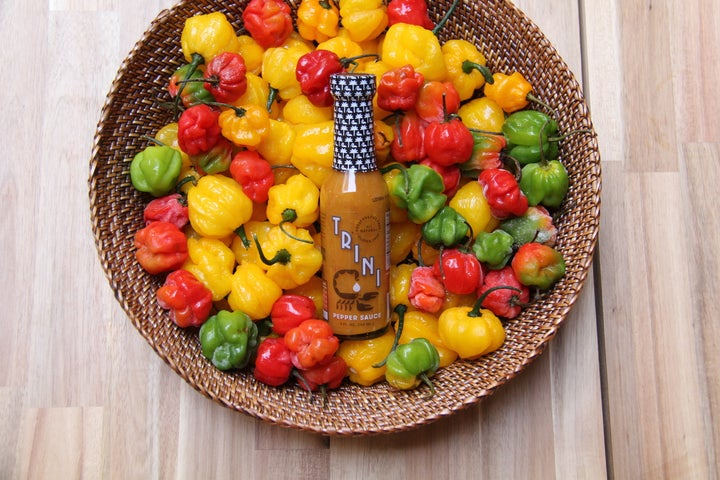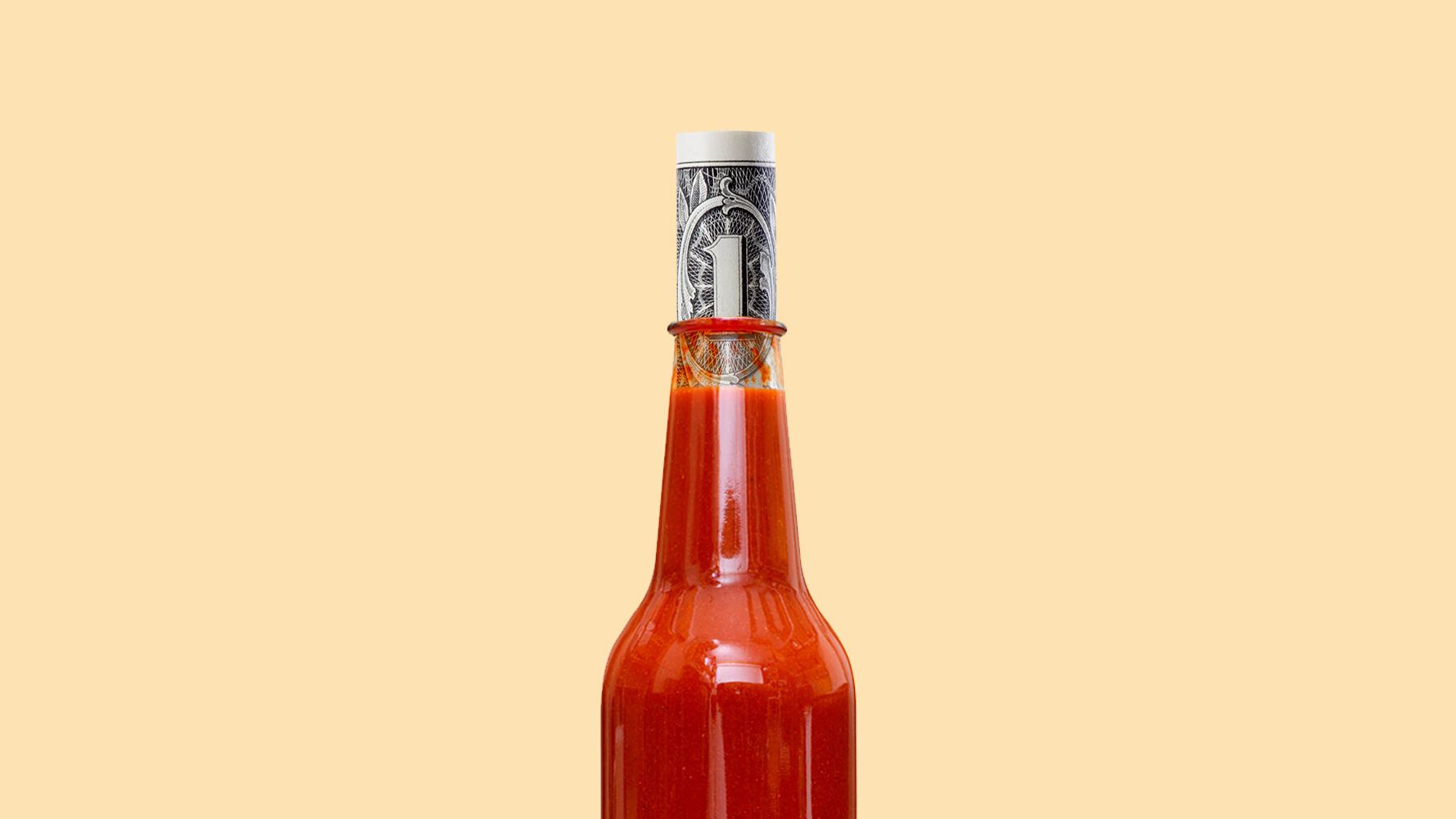CHAPEL HILL, N.C. — Alvin Martell Scott Jr., 78, knows he’s an anomaly.
He is part of the second generation of Scotts to take over the family business: producing a tangy blend of natural spices and vinegar that’s bottled up and stocked in grocery stores.
Scott’s Barbecue Sauce has maintained its popularity in North Carolina, where the brand was built in 1945, and it can be found on grocery store shelves across the country.
The recipe dates back to 1917, when Scott’s grandfather first created it to season barbecue pork. The sauce carried such a reputation in Goldsboro, North Carolina, that Scott’s father, Alvin Martell Scott Sr., went to the U.S. Patent and Trademark Office in 1945 to patent the recipe and start selling it by the bottle.
By the early 1950s, the sauce could be found in two-thirds of all grocery stores in the state. His father continued to run the business until 1968, when the younger Scott took over.
“They didn’t pressure me,” Scott said. “But I felt as if it was something I was destined to do. By the second or third generation, the businesses are sold. A lot of families don’t last this long.”
There’s no denying that the hot sauce business is booming. The industry was valued at $2.29 billion in 2018, and is expected to reach $3.77 billion by the end of 2026, according to a market research report published in 2019. Hot sauce isn’t a trendy condiment that white consumers have just discovered; it’s rooted in the cuisines of plenty of communities of color.
In 2019, grocery store delivery service Instacart reported America’s 10 most popular hot sauces. All but these four sauces — La Costeña, Tapatío, Huy Fong Foods Sriracha and Cholula — are made by white-owned corporations. The CEOs of the brands that own Frank’s Red Hot (McCormick and Co. Inc.), Tabasco (McIlhenny), Burman’s (Aldi), Texas Pete (Garner Foods), Crystal (Baumer Foods), Louisiana (Southeastern Mills) and Taco Bell (Yum! Brands) are white.
For an industry insider like Scott, who is Black, this information isn’t surprising.
“A lot of the successful companies have been bought out by larger ones,” Scott said. “I don’t hold back on saying that. I’ve had a number of people who tried to contact me. It’s very competitive. And small, independent businesses trying to get into the market will have to spend substantially in order to buy space on store shelves now.”
And these larger companies are statistically more likely to be white.
Major hot sauce companies account for 40.3% of the industry’s revenue in 2019, according to the market research firm IBISWorld. The rest of the market is split up by the numerous small-scale companies, each failing to make a dent similar to McIlhenny, McCormick & Co., or Huy Fong Foods. Of those, only Huy Fong Foods is run by a person of color: David Tran, a Chinese immigrant from Vietnam.
The market is a blend of larger corporations, who may manufacture products beyond just hot sauce, and privately owned hot sauce producers who work on a much smaller scale. Due to the relative affordability of hot sauce materials, it’s an easy industry to break into. But competing against well-established, multibillion-dollar companies is a hard task.
Scott knows this all too well. He thinks becoming commercially successful in this industry looked a lot different in 1960.
“It used to be a matter of talking to a buyer and having them take a look at your product,” Scott said. “Things have changed a bit over the years and it’s harder to talk to a buyer in person. Technology has a lot to do with it. Larger products are controlled by larger companies.”
The battle for a small independent hot sauce owner to get their product on the shelf of a major grocery chain is almost impossible. It’s the reason why some — like Mustafa Mannan, 31, the man behind Trini Pepper Sauce — are now turning to social media.
The recipe for Trini Pepper Sauce is scaled out and processed by a food manufacturing facility in Elizabeth Town, North Carolina, about twice a year. Each batch made is roughly 75 gallons. Mannan then picks up the batch in a rented truck. Sometimes he’ll even use his parents’ van.
“It works easier this way, because you’re not paying as much for the labor cost,” said Mannan, who is Black and from Trinidad. “After I pick it up, I deal with mailing everything out to customers.”

For the past five years, Mannan has been distributing his sauce this way. It’s practically down to a low-budget science.
“In Trinidad, hot sauce is a staple,” Mannan said. “We eat it with everything. Every family has their own recipe. Mine was passed down from my great-grandma, who passed it to my grandma, who then taught it to me.”
Mannan’s grandmother would frequently send him batches of her sauce when he was growing up, and he would share it with his friends. It eventually got harder to have the sauce sent to him, so a friend of his suggested that he try to make it on his own.
Pepper sauce is different from traditional hot sauce, Mannan explains. It’s full-bodied because the ingredients, like whole peppers, papaya and garlic, aren’t strained out, creating a consistency that fits somewhere between a vinaigrette and salsa.
When he was 26 and “very broke,” Mannan made a bunch of samples and posted about them to reddit threads like r/freebies, r/northcarolina, r/raleigh and r/hotsauce, which reached hot sauce enthusiasts around the world. They used the subreddits to increase the hype before launching a campaign on Kickstarter. Mannan and his friends raised over $30,000 to jump-start their business.
“If I was given the opportunity to go full time, I would,” Mannan said. “But the food industry is hard. We can’t compete price-wise with sauces like Texas Pete that have been dominating the market forever. We’re still fairly new.”
Mannan estimates that the company has sold over a thousand cases since its launch, or nearly 14,000 bottles per batch. That’s roughly $70,000 in profits, or $8,000 to $10,000 per year for the past five years.
Mannan isn’t surprised by the demographics of the industry, which he said is overwhelmingly white and male.
“I’m not necessarily mad about it because I’m all about spreading the culture,” Mannan said. “I would like people to be authentic and present their product in its truest form.”
Another major barrier for nonwhite owners is how hard it is for international brands to infiltrate the American market. Just ask Michael Touby, the president of Marie Sharp USA, the American branch of the Belize-based hot sauce company known as Marie Sharp Fine Foods Limited. The main company is still run by Marie Sharp herself, an 80-year-old Latina who is from Belize.
“We’re still very much a small, family-based company,” said Touby, who is white. “It’s a very fickle industry, and it’s very hard for newcomers to establish themselves in it.”
The company, which was established in 1981, wasn’t able to begin distribution into the United States until 1989, under the name Melinda’s. It eventually turned to Kickstarter, to crowdsource support for its spicy Belizean Barbacoa sauce, Maya Mike.
As for Alvin Martell Scott Jr. in North Carolina, he’s already preparing for the next generation of Scotts to take over: his son, Alvin Martell Scott III, who is 54.
“My son joined me in 1988 and he’s been a part of the business for 30 years,” Scott said. “Between the two of us, we’re carrying on the name. We both want to keep it going for as long as we can.”
Calling all HuffPost superfans!
Sign up for membership to become a founding member and help shape HuffPost’s next chapter


